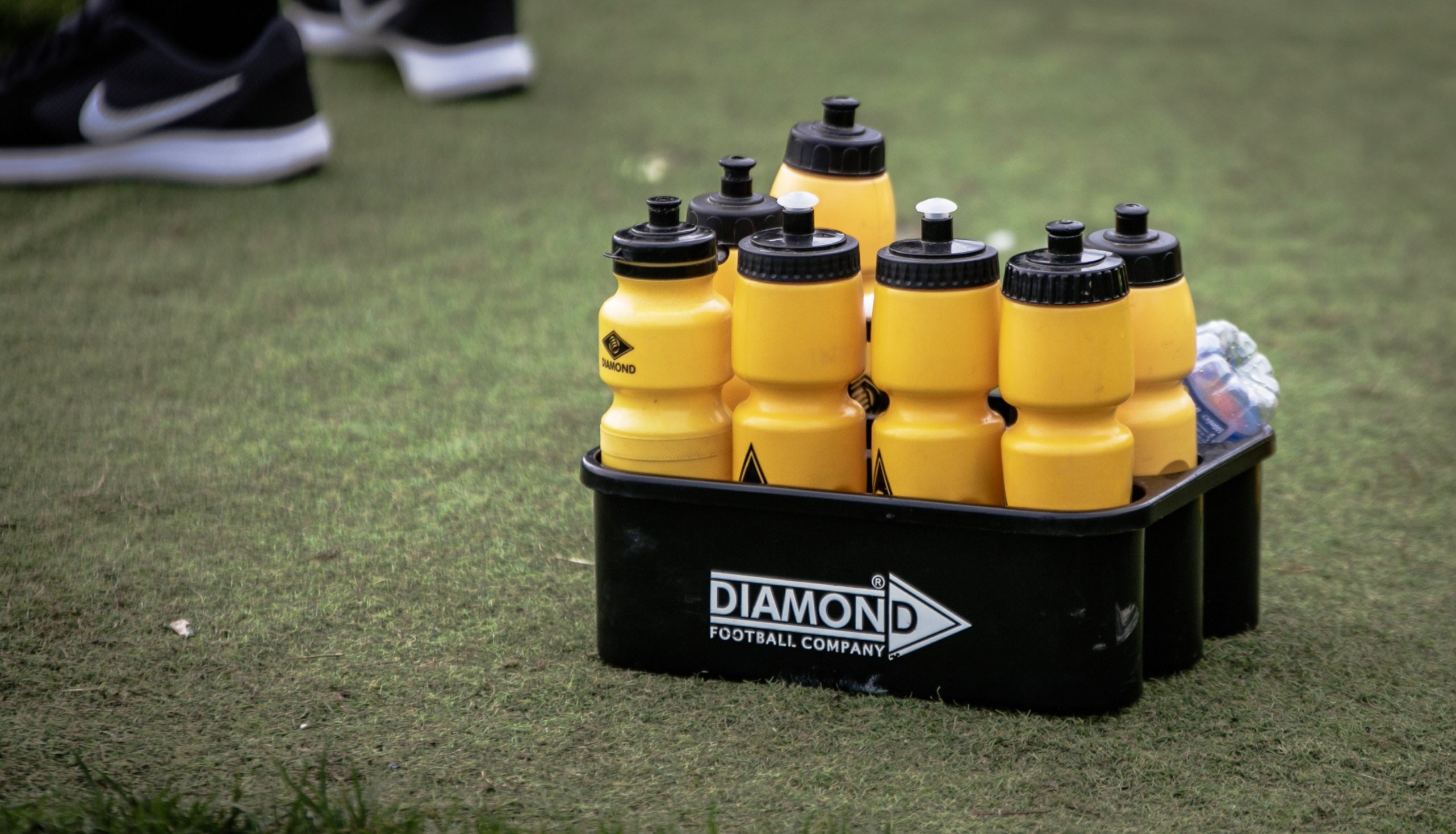3 Steps to Hydration For Youth Athletes
Making sure youth athletes start their training session or competition in a well-hydrated state and preventing dehydration can be one of the biggest influences on success and performance.
But it’s often overlooked by many athletes and not considered important. We take a look at three simple steps to keep the body hydrated and in top condition to win.
Dehydration
Water and electrolyte balance in the body is critical in ensuring the body can function correctly, both for sports performance and more importantly for general health [1]. Research widely shows water losses of as little as 2% of body weight can result in significant reductions in performance [2], causing early fatigue, effecting response time and co-ordination and making everything seem much harder than usual [2,3].
Children and adolescents have lower sweat rates than adults and so cannot regulate their body heat as effectively. This puts them at a much greater risk of heat stroke, meaning what they drink is crucial. This is even more important in hot or humid conditions or when exercise intensity is high. The easiest way for youth athletes to asses hydration status is by simply looking at the colour of their urine. Using the chart below, they should be aiming for lighter colours towards the top.

Adapted from NHS guidelines (2020)
Symptoms
As well as affecting sports performance, dehydration can also have physical symptoms and affect overall health. Signs of dehydration include:
- Loss of energy
- Increased fatigue
- Headaches
- Nausea
- Dizziness
- Disorientation
- Fainting
- Heat stroke
Step 1. Prevention
Making sure young athletes start a training session or competition in a euhydrated state (adequately hydrated) is the first step to preventing dehydration. If they have a morning event, make sure they drink a glass of water or juice as soon as they wake up. If the session is in the evening, they should be drinking continually throughout the day [3].
Aim for around 400-600ml, sipped in the hours before the event [3]. Although there are no set guidelines on exact amounts young athletes should be drinking throughout the day, The British Dietetics Association (BDA) and the NHS recommend around 1.5L per day [4,5].

TIP: Invest in a good water bottle, keep it topped up and sip it during school, when traveling and during the warm-up.
Step 2. Keeping Hydrated
As the muscles work during exercise, the body produces heat as a result, which causes its temperature to rise. The harder the body works or the hotter the conditions, the bigger the rise in temperature and the more the body will sweat to try and cool itself [3].
Because children can’t regulate their body as efficiently as adults, preventing dehydration through drinking is key. Youth athletes should drink at regular intervals throughout training and competitions, using any breaks in play to consume fluids. Keeping a water bottle at the side of the pitch or the court will make this easier and using half time breaks to rehydrate is essential.

What to Drink?
For events <60 minutes, water is usually all that is need. However, if an athlete prefers a flavoured drink or juice, then having this on hand will likely increase their intake.
For longer events, a sports drink will provide an essential energy boost, as well as maintaining hydration
For hot and humid conditions, or when the sweat rate is high, an isotonic drink, such as sports drinks or hydration tables are essential to replace the electrolytes lost by the body.
Step 3. Rehydration
The amount a youth athlete sweats and therefore the amount of water and electrolytes they lose will vary from athlete to athlete and training session to training session. The easiest way to asses this is for athletes to weigh themselves before and after a session to see if/how much weight they have lost.
The American College of Sports Medicine [6]recommends drinking 1-1.5 times the amount lost after exercise. So, for every 1kg lost, 1.5L of fluid should be consumed during and in the hours after exercise [3].

Remember: When it comes to hydration prevention is better than cure!
Youth Sport Nutrition Services
If you're looking for personalised nutrition advice, consider Youth Sport Nutrition nutrition services. We offer professional consultations with qualified sports nutritionists at below-market rates to help you explore the best solutions.
Disclaimer: This article is intended to provide general information about nutrition for youth athletes and is not meant to replace professional dietary advice or individual nutritional counselling. Every child's nutritional needs can vary due to factors such as age, size, physical activity level, and medical conditions. We strongly recommend consulting with a registered dietitian or a healthcare provider before making changes to your child's diet, such as adding food powders. YSN and the author of this article do not take responsibility for any possible consequences from any treatment, procedure, dietary modification, action, or application of medication which results from reading or following the information contained in this article.
References
- Kavouras, S. and Arnaoutis, G. (2012) Hydration Status in Active Youth. Nutrition Today, 47, pp. S11-S13.
- Jeukendrup, A. (2012) Sports nutrition. Maidenhead: Meyer & Meyer Sport.
- Bean, A. (2013). Anita Bean's Sports Nutrition for Young Athletes. London: Bloomsbury Publishing.
- BDA (2020) Fluid (water and drinks)[Online]. 2020. Available at: https://www.bda.uk.com/resource/fluid-water-drinks.html. (Accessed: 23 January 2020).
- NHS (2020) Water, drinks and your health. [Online]. 2020. nhs.uk. Available at: https://www.nhs.uk/live-well/eat-well/water-drinks-nutrition/. (Accessed: 23 January 2020).
- Sawka, M., Burke, L., Eichner, R., Maughan, R., Montain, S., and Stachenfeld, N. (2007) American College of Sports Medicine Position Stand: Exercise and Fluid Replacement. Yearbook of Sports Medicine, 2007, pp. 254-255.


Leave a comment